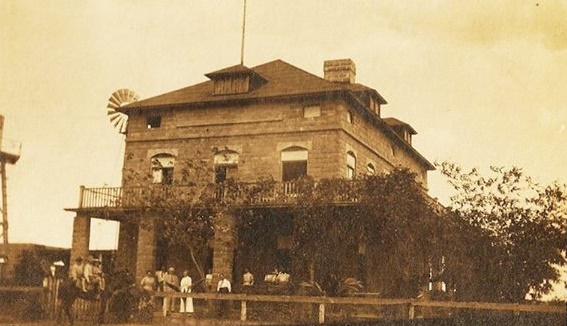
The centennial Casa de Piedra (Stone House) is a landmark in Las Tunas, its construction dates from around 1908, its ruins today house a recreational center of the Palmares Extra-hotel Company, belonging to the Ministry of Tourism. But 100 years ago it was a symbol of US exploitation and intervention in Cuba.
Las Tunas, Cuba.- According to researcher Norge Fernández Suñol, in the mid-19th century, the lands were owned by a Creole family, Mr. Salvador and Mrs. Mercedes Burgueño, who inherited them from Mr. Gregorio Salgao, in 1887.
On May 16, 1890, the rich landowner Pelegrín Bori y Romagoza obtained the property rights, and later, in 1904, he sold the lands to the North American entity The Youngstown Castle Company, and they were dedicated to the cultivation of citrus.
Those were years of surrender, Tomás Estrada Palma opened the doors wide for Yankee interests to loot the country's wealth. More than 30 caballerias from the best lands of Las Tunas were destined by the North Americans to plant citrus, but the business did not yield. In addition to La Larga and La Conga growing areas, the company also acquired La Concordia farm, an area known as El Pueblo, near the city of Victoria de Las Tunas.
In 1908 the construction of a three-story house began, block walls, a zinc roof and a wooden and cement floor, with a style reminiscent of homes in the southern United States, which began to be identified by locals as the Stone House.
Not obtaining the desired results, that same year the "Youngstown" sold the property to another American company, Las Tunas Realty Company, whose owners moved into the residence. But these are not successful either and finally, they renounce the land in favor of another foreign company, Las Tunas Citrus Fruit Company, a transaction legalized by deed No. 44 of March 1910, before the notary Nicolás E. Villoch.
The plantations are finally beginning to bear fruit and the Citrus Fruit Company places Mr. Charles Milligan as a general administrator of its assets in Cuba. This man initiated transformations, created a school for the children of North Americans, foremen and landowners, with a teacher from the northern country who taught in English. Poor children, children of day laborers and peasants, could not look out there.
On one occasion, during a railroad workers' strike, a batch of grapefruits could not be shipped for export to the United States, the people asked that it be sold to them, but Mr. Charles preferred to let the load rot rather than give it to the poor.
In 1916, the situation in the country was turbulent, the Citrus Fruit Company decided to sell the property, and Mr. Charles acquired the rights. But, evidently, his economy suffered, and around 1919 he moved to a smaller house nearby and gave the Stone House for rent. He mortgages the lands and plantations to Mrs. Mercedes Moro y Llanes for 10,000 pesos, with an annual interest of 10 percent for five years.
According to deed 105 of July 17, 1916, Milligan sells his citrus fruits to Eduardo Díaz de Ulsurrun, Marquis of San Miguel de Aguayo; While the house was sold in 1938 to José Acosta, and left the country in 1940.
From there, the property began to deteriorate little by little, by the 50s it had multiple uses until it was definitely abandoned.
Three foreign companies acquired these properties and none of them obtained the expected results. During their stay in Las Tunas, they plunged the humble peasants of the area into the most cruel exploitation, working from sunrise to sunset for a miserable salary, without worrying about their health or education. Only the Revolution claimed the rights of those men and women who suffered the foreign boot.
And there are the ruins of the memorial compound. Today citrus trees do not grow in these lands, but schools, child care centers, a community polyclinic, pharmacies and all the necessary services so that the residents of Casa de Piedra can live with dignity as human beings.






